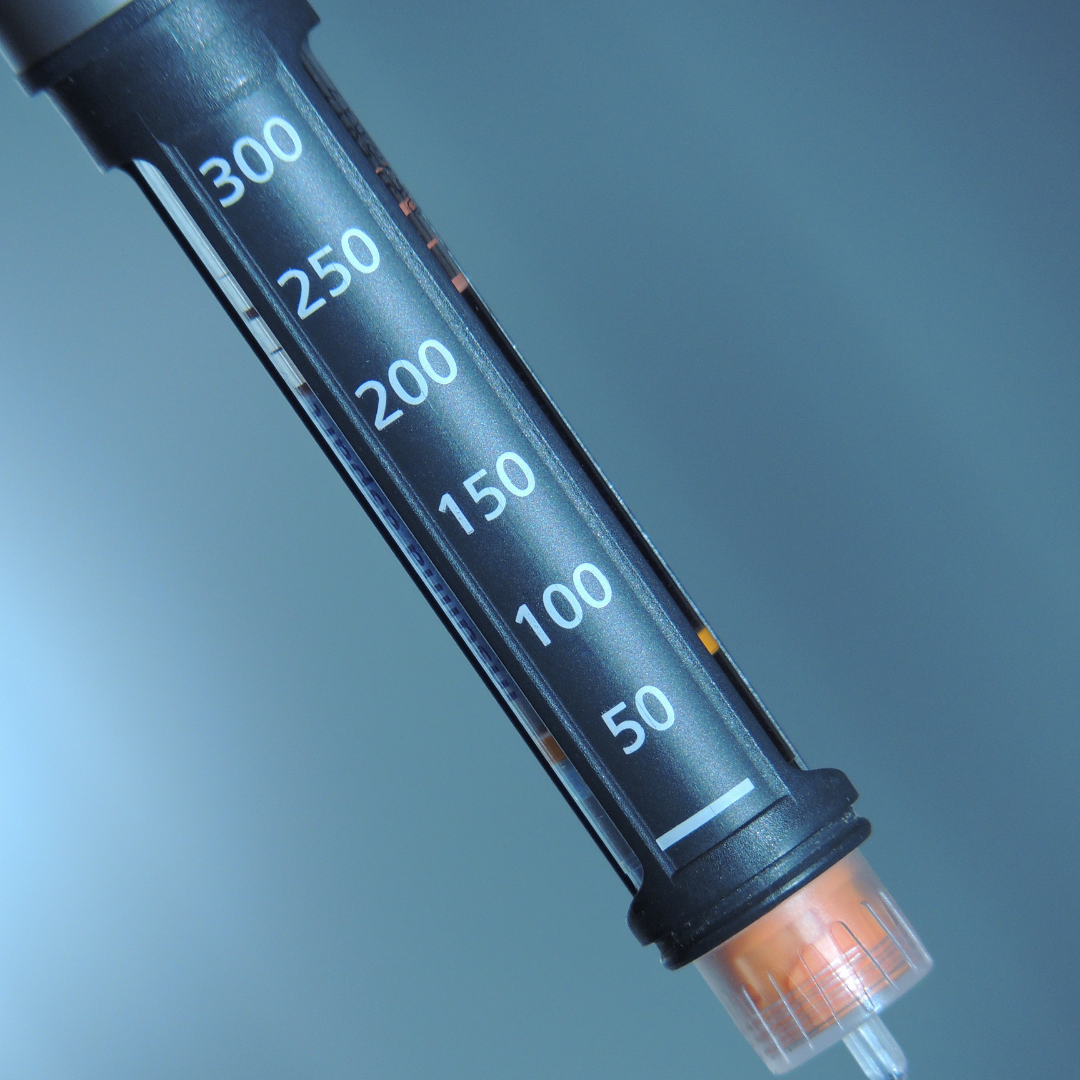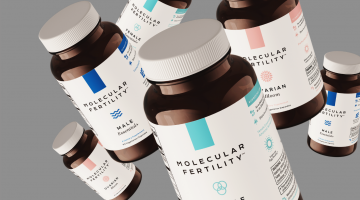Your Guide to Gonal-F: Usage, Benefits, Side Effects, and More

Gonal F, also known by its generic name follitropin alpha, is a prescription fertility medication that contains follicle-stimulating hormone (FSH.) It is administered in injection form, most commonly through a multiple-dose pen (Gonal F RFF redi-ject.) Gonal F stimulates the ovary to produce healthy eggs. It is most commonly used in conjunction with fertility treatments, especially IVF, to encourage women’s ovaries to produce multiple eggs in one cycle. Gonal F is also used to treat female infertility caused by irregular or anovulation (absence of ovulation.) For men, Gonal F can help to increase and improve sperm counts to treat male infertility.
Fast Facts
- Gonal F is used alongside fertility treatments to improve women’s chances of getting pregnant. Gonal F may cause women’s ovaries to develop multiple eggs. Multiple eggs increase the chances of success for treatments like IUI and IVF.
- Gonal F is also commonly used to increase the number of eggs retrieved and stored when women undergo an egg freezing cycle.
- Gonal F can be used to induce ovulation and pregnancy for women who ovulate irregularly.
- For men, Gonal F aids with sperm production. It can help induce healthy spermatogenesis (development of sperm cells) for infertile men.
- Gonal F dosing varies from patient to patient. As such, it comes in single and multiple dosage vials. It is also available in a redi-ject pen form.
- Gonal F has many potential side effects and it may not be appropriate for all fertility patients.
What is Gonal F?
Gonal F is a gonadotropin fertility drug that contains recombinant follicle-stimulating hormone (r-FSH.) Gonadotropins are hormones (FSH & LH) secreted by your pituitary gland that stimulate the growth and activity of your sex organs. FSH plays a vital part in egg and sperm production and regulates several reproductive processes for both men and women.
For women, FSH helps regulate the menstrual cycle and it is essential for ovulation to occur. FSH is produced by the pituitary gland at the start of the menstrual cycle and is sent throughout the body. FSH stimulates the follicles in the ovary to develop and mature. These follicles contain eggs. Once the ovarian follicles reach maturity, they release an egg. In a normal ovulatory cycle, only one follicle fully develops and one egg is ovulated. In a Gonal F medicated cycle, multiple follicles may reach maturity and multiple eggs may be ovulated.
For men, FSH stimulates the production of sperm and maintains sperm until they are ready to be released.
*Please note that Gonal F is just one brand-name fertility medication that contains FSH. Gonadotropin fertility medications containing FSH have been researched extensively in many large trials. The studies below were completed to solely test the effectiveness of Gonal F to treat infertility. As such, the sample sizes may seem small, but the results are consistent with much larger studies conducted on generic (non-name brand) rFSH medications .
Gonal F for Female Fertility
Gonal F helps to improve female fertility in two main ways:
(1) Controlled Ovarian Hyperstimulation – stimulating the ovary to produce multiple follicles and multiple eggs as part of a fertility treatment program.
(2) Ovulation induction – stimulating the ovary of women with ovulatory issues to produce and release one or a few eggs.
Gonal F is commonly prescribed along with fertility treatments like IUI, IVF, and egg freezing. Gonal F and other gonadotropin medications are often used to induce ovulation for women who have not had success with other fertility medications like clomiphene and letrozole.
Fertility patients undergo multiple scheduled Gonal F injections throughout their treatment cycle to boost their FSH levels. Increased FSH levels can cause several ovarian follicles to develop and several eggs to mature.
By encouraging the development of multiple egg follicles during the menstrual cycle, Gonal F significantly increases the likelihood of fertilization and pregnancy. Once the egg(s) develops, women are then given a “trigger shot” containing human chorionic gonadotropin (hCG). The hCG injection helps to further stimulate ovulation.
Gonal F also helps to regulate the menstrual cycle, so that ovulation is timed more precisely. This helps ensure that fertility procedures like IUI are performed at the appropriate time.
To further ensure appropriate timing, patients undergo monitoring appointments during a Gonal F cycle to check the development of their follicles and eggs. These appointments allow fertility specialists to ensure that follicles (which house your eggs) are developing appropriately (and adjust medications if they are not). Monitoring follicular development also allows for appropriate timing of fertility procedures like an insemination or egg retrieval. Additionally, monitoring during your ovarian stimulation helps us avoid any potential complications like ovarian hyperstimulation.
Controlled Ovarian Hyperstimulation
The efficacy of Gonal F to be used in conjunction with fertility treatments was tested in a randomized, open-label, multicenter, active-controlled trial. Women in the trial were infertile but they ovulated regularly. 56 women were treated with Gonal F to simulate multiple follicle growth prior to IVF treatment. Please find the results of that study in the table below.
| Mean number of Oocytes Recovered per Patient | 9.3 |
| Clinical Pregnancy Rate Per Attempt | 20% |
| Clinical Pregnancy Rate Per Embryo Transfer | 23% |
| Mean number of follicles ≥ 14mm diameter | 7.2 |
In a normal unmedicated reproductive cycle, only one oocyte becomes a mature egg and is ovulated. In this study, a mean number of 9.3 oocytes was retrieved per patient. When more eggs are retrieved, there are more opportunities for successful fertilization and the formation of healthy embryos. This improves the odds of a successful IVF transfer and improves the chances of pregnancy. Out of the 56 total women treated with Gonal F 11 achieved clinical pregnancy. The clinical pregnancy rate per embryo transfer is higher than the total clinical pregnancy rate because only 47 women underwent an embryo transfer .
In a double-blind, randomized, multicentre study, 139 women undergoing ovarian stimulation for in-vitro fertilization and intracytoplasmic sperm injection (ICSI) were treated with Gonal F. Please find the results of the study below.
| Percentage of Patients with at least One Oocyte Retrieved | 92% |
| Mean Number of Oocytes Retrieved | 11 |
| Number of Babies Born | 36 |
During oocyte retrieval, 128 patients (92%) had at least one oocyte retrieved. The mean number of oocytes retrieved was 11. 36 babies were born out of the Gonal F treatment group. The results showed that Gonal F can successfully induce multiple follicular development for patients undergoing IVF treatment.
In another study, researchers measured the effect of Gonal F on clinical pregnancy rates and live birth rates for patients undergoing IVF cycles. 100% (27 out of 27) of the patients treated with Gonal F produced oocytes for retrieval. The clinical pregnancy rate was 66% and the live birth rate was 40.7% .
| Percentage of Women who Underwent a Retrieval | Clinical Pregnancy Rate | Live Birth Rate |
| 100% | 66% | 40.7% |
Ovulation Induction
Researchers tested the efficacy of Gonal F to induce ovulation in a randomized, open-label, multicenter, active-controlled trial. 118 women with oligo-anovulatory infertility were treated with Gonal F. Please find the results of the study below.
| Cycle Number | Percent Ovulation | Cumulative Clinical Pregnancy Rate |
| 1 | 58% | 13% |
| 2 | 72% | 25% |
| 3 | 81% | 37% |
Both the percent ovulation and clinical pregnancy rates are cumulative statistics. By their third cycle, 95 of the 118 women treated with Gonal F ovulated (81%) and 44 achieved clinical pregnancy (37%) .
Gonal F and Male Fertility
Gonal F can be used to induce spermatogenesis, especially in infertile men. Gonal helps treat male infertility by increasing the FSH levels in the body. As previously mentioned, FSH stimulates the production of sperm and maintains sperm until they are ready to be released.
Men’s FSH levels are constant, so they can be tested at any time. If you undergo a semen analysis and your results indicate you have a low sperm count, your fertility doctor will likely recommend additional testing, including a blood test. If your blood test indicates your FSH level is low, then you may be a good candidate for Gonal F treatment.
Gonal F and Spermatogenesis
Researchers tested the efficacy of Gonal F to induce spermatogenesis in men with low gonadotropin levels (testosterone, FSH, and LH) and low sperm concentrations. Three trials were conducted on 78 adult men. Researchers measured the ability of Gonal F to help men with low sperm concentrations to achieve a sperm density ≥ 1.5 x 106/mL (normal sperm density.) Please find the results of the study below.
| Normal Sperm Concentration Post Treatment | Trial 1 | Trial 2 | Trial 3 | Total |
| Yes | 12 (46.2%) | 5 (62.5%) | 20 (80%) | 37 (62.7%) |
| No | 14 (53.8%) | 3 (37.5%) | 5 (20%) | 22 (37.3 %) |
In total, 62.7% of men in the trial were able to achieve a normal sperm concentration after Gonal F treatment. In the third trial, 80% of men achieved normal sperm concentration .
Other studies have confirmed that Gonal F treatment is a well-tolerated and effective treatment for inducing spermatogenesis and treating infertility, especially for gonadotropin deficient men .
Gonal F Side Effects
As with any prescription medication, be sure to consult with your doctor before starting Gonal F treatment. Gonal F can potentially cause serious side effects and it may interact with other medications.
Side Effects Include:
- headache
- drowsiness or dizziness
- vaginal bleeding
- injection site reactions
- upper respiratory tract infections
- stomach pain
- nausea
Serious Side Effects Include:
- Ovarian Hyperstimulation Syndrome
- ovarian cysts
- serious pulmonary complications
- blood clots
For additional information on the side effects of Gonal F and other gonadotropin medications, click here. Call your doctor for medical advice about side effects.
How to use Gonal F
Gonal F comes in several different dosages and forms. The type you are prescribed depends on several different factors including what you are using the medication to treat. For instructions on how to use each type, please check out the links below:
Gonal-f® Multi Dose Vial – Instructional Video
Gonal-f® RFF 75IU Vial – Instructional Video
Gonal-f® RFF Redi-ject Pen – Instructional Video
Instructional videos provided by Freedom MedTEACH.
Dosage
Gonal F dosing varies greatly from patient to patient. Be sure to follow your doctor’s instructions closely. The number of doses per day, the time between doses, and the length of time you take Gonal F depends on what you are using the medication to treat and what fertility treatment you plan to undergo.
Gonal F is prescribed at lower doses to patients with ovulatory issues, especially if they have PCOS, to lower the risk of ovarian hyperstimulation.
Similar Medications
As previously mentioned, Gonal F is a gonadotropin fertility drug, more specifically a fertility drug made up of recombinant human follicle-stimulating hormone (rFSH). rFSH is a type of FSH created in a laboratory. Bravell and Follistim AQ are fertility medications that also contain rFSH.
In addition to rFSH, similar fertility medications may include; human menopausal gonadotropins (hMG), purified FSH (brand names Bravelle and Fertinex,) and highly purified FSH. Human menopausal gonadotropins (hMG) contain both FSH and LH. Human chorionic gonadotropin (hCG), is commonly used alongside gonadotropin injections in fertility treatment to trigger ovulation
In Conclusion
Gonal F is a brand-name injectable fertility medication that can help to treat both male and female infertility. It contains follicle-stimulating hormone (FSH), which plays a vital role in several different reproductive processes. For men, Gonal F can improve semen parameters. Gonal F is used to encourage multiple follicles and oocytes to develop for patients undergoing fertility treatments to improve their chances of achieving pregnancy. It can also help to induce ovulation for women with ovulatory issues.





